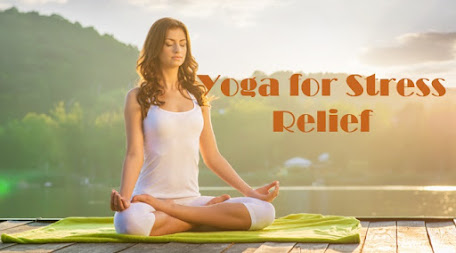For many people in today's fast-paced world, stress is an inevitable component of everyday existence. Professional schedules, financial pressures, or personal difficulties can all cause stress, which can be harmful to our physical and emotional health. Thankfully, there are safe and efficient methods for reducing stress, and yoga is among the most potent ones. Regular yoga practice can help you reduce stress and enhance your general wellness and vitality. In this guide, we will cover popular yoga poses, breathing techniques, and online tools that can help you reduce stress.
The Power of Yoga for Stress Relief
Yoga is a very ancient practice that dates back thousands of years all over the world. It promotes total well-being by fusing breathing exercises, meditation, and stretches. Activating the body's relaxation response, which helps offset the effects of stress on the nervous system, is one of yoga's main advantages.
Studies have indicated that yoga can reduce anxiety, elevate mood, and decrease levels of the stress hormone cortisol. Regular yoga practice has also been connected to additional health advantages like improved focus and concentration, more flexibility, and better sleep.
Best Yoga Poses for Stress Relief
4. Legs-Up-the-Wall Pose: This restorative pose promotes relaxation by allowing blood to flow back towards the heart. Lie on your back with your hips close to the wall, then extend your legs up the wall and relax your arms by your sides.
5. Corpse Pose: The ultimate relaxation pose, savasana helps to quiet the mind and release tension throughout the body. Simply lie on your back with your arms and legs extended, palms facing up, and allow yourself to surrender completely to gravity.
Breathing Techniques for Stress Relief
In addition to yoga poses, breathing techniques (pranayama) can be powerful tools for managing stress and anxiety. Here are two simple yet effective techniques to try:
1. Deep Belly Breathing: Sit or lie down in a comfortable position and place one hand on your belly and the other on your chest. Inhale deeply through your nose, allowing your belly to rise as you fill your lungs with air. Exhale slowly through your mouth, feeling your belly fall. Continue this deep belly breathing for several minutes, focusing on the sensation of the breath moving in and out of your body.
2. Alternate Nostril Breathing: Sit comfortably with your spine tall and shoulders relaxed. Place your left hand on your left knee with the palm facing up, and bring your right hand towards your face. Use your right thumb to close your right nostril and inhale deeply through your left nostril. Then, close your left nostril with your right ring finger and release your thumb, exhaling through your right nostril. Inhale through the right nostril, then close it with your thumb and exhale through the left nostril. Continue this alternating pattern for several rounds, focusing on the steady rhythm of your breath.
Incorporating Health and Fitness Calculators into Your Yoga Practice
As you embark on your journey to reduce stress through yoga, it's important to track your progress and stay motivated. Health and fitness calculators can be valuable tools for setting goals, monitoring your achievements, and staying accountable. Here are a few calculators you might find useful:
Calorie Calculator: Use a calorie calculator to determine your daily caloric needs based on factors such as age, gender, weight, height, and activity level. This can help you maintain a balanced diet and manage your weight effectively.
BMI Calculator: Body Mass Index (BMI) is a measure of body fat based on height and weight. Use a BMI calculator to assess your current BMI and set realistic goals for weight management.
Heart Rate Calculator: Monitoring your heart rate during exercise can help you optimize your workouts and ensure you're working at the right intensity level. Use a heart rate calculator to determine your target heart rate zones based on your age and fitness goals.
Pace Calculator: If you're incorporating yoga into a broader fitness routine that includes activities like running or cycling, a pace calculator can help you track your progress and set pace goals for your workouts.
By combining the stress-relieving benefits of yoga with the tracking capabilities of health and fitness calculators, you can create a well-rounded approach to managing stress and improving your overall health and well-being.
In conclusion, yoga offers a powerful antidote to the stresses of modern life, providing both physical and mental benefits that can help you feel more calm, centered, and resilient. By incorporating the best yoga poses and breathing techniques into your daily routine, along with the use of health and fitness calculators to track your progress, you can embark on a journey towards greater peace, vitality, and balance.
Remember, consistency is key, so make a commitment to yourself to prioritize your health and well-being each day. With dedication and practice, you'll soon discover the transformative power of yoga for stress relief and overall wellness. Thank You.



Comments
Post a Comment